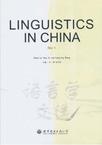语言学文选(第一辑)
出版时间:2010-8 出版社:世界图书出版公司 作者:石锋,张洪明 主编 页数:340 字数:450000
Tag标签:无
前言
I received good news that World Publishing Corporation is putting forward two linguistics se-ries-Overseas Linguistics and Linguistics in China. The former plans to introduce important linguisticresearches overseas to China by translating them into Chinese, and the latter aims at disseminatingChinese linguistic researches to the rest of the world by converting them into English. The editors,Professors Feng Shi and Hongming Zhang, asked me to compose a foreword for these two series, pro-viding me the free'tom of deciding whether to write a foreword for each or one for both. Here I re-spectfully ask permission to choose the second option. I have two reasons for doing so" Firstly, the twoendeavors——introducing top researches from abroad to China and from China to the English-readingworld——complement each other, both of which are indispensable to the promotion of linguistic studiesglobally. Secondly, writing only one foreword will spare the trouble of being repetitions.
内容概要
This is a translated collection of the most distinguishedjournal articles of the Chinese linguistics field. Articles wereselected for their originality, novelty, theoretical significance,and enlightenment to general linguistics study. Most ofthe articles selected were published in the last five years.The eighteen articles included in this book cover nearlyall major areas of Chinese linguistics, such as phonology,syntax, semantics, pragmatics, language contact, languageevolution, and comparative studies of Sino-Tibetan languages.These articles document discussions of some theoreticalissues through the case studies of Asian languages. Thisbook is appropriate for readers of the linguistics circle andserves as a reference book in Chinese linguistics study.
作者简介
石锋,Feng Shi is a professor andthe Director of Linguistics Instituteof Nankai University in China. Heis also currently serving as thechief editor of Journal of NankaiLinguistics as well as the presidentof Tianjin Linguistics Association.He received his
书籍目录
前言音系 重音、信息和语言的分类 藏缅语族松紧元音研究 天津话的连读变调及轻声:优选论分析 “天津话连读变调之谜”的优选论解释语法 汉语是话语概念结构化语言吗? 非谓形容词的词类地位 方位词的词性及其理论意义 被字句和把字句的对称与不对称 从日语的角度看汉语被动句的特点语义 再谈相同词语之间语义关系的多重性 概念叠加与构式整合 汉语类指成分的语义属性和句法属性 反义类比构词中的语义不对应及其成因 词类范畴的家族相似性语言演变 汉藏语系语言里的一个疑问语素 竞争性音变与历史层次 水语里汉语借词层次分析方法 交际压力度(DCP)与混合语形成机制——以倒话为例
章节摘录
Abstract: Chinese word classes are prototype categories in nature. Ordinary people tend to group thewords, which share the family resemblances in distribution, into the same class. It is not feasible todivide the word classes by using the conjunctive and disjunctive relations between distributional fea-tures since we might not find a feature exclusively shared by all members of a class. There are typicalmembers and non-typical members in a certain word class. The typical members are the prototypes ofthe class and serve as the standards for the classification of the non-typical member. And the typicalmembers of the same class always share a bundle of distributive features, which could be taken as thebasis to divide and define word classes. Though the typical members of different classes have appar-ent disparities, the non-typical members of different classes only show slight and vague disparities,which has been the origin of the dilemma in Chinese word class dividing. At last, the paper presentsthe advantages of prototype theory in Chinese word class dividing and some other linguistic fields,such as the judgments on the identities of some syntactic constructions, and the classification of dia-lectal regions.
编辑推荐
让世界了解中国语言学 让中国语言学走向世界
图书封面
图书标签Tags
无
评论、评分、阅读与下载
用户评论 (总计1条)
- 此书一定要有。
